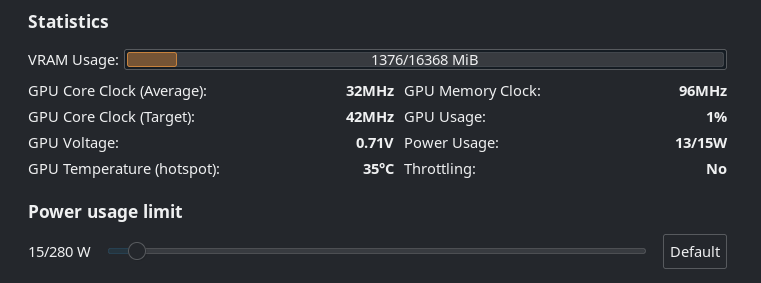Because:
The DistroWatch Page Hit Ranking statistics are a light-hearted way of measuring the popularity of Linux distributions and other free operating systems among the visitors of this website. They correlate neither to usage nor to quality and should not be used to measure the market share of distributions. They simply show the number of times a distribution page on DistroWatch was accessed each day, nothing more.
So people see it on the list and click on it wondering "what the heck is this MX Linux thing". And that boosts the ranking. And now that it's at the top, it attracts more curious clicks, thus it continues to remain on top.




Here's the TL;DR from Phoronix:
#AMD
AMD P-State Preferred Core handling for modern Ryzen systems. This is for leveraging ACPI CPPC data between CPU cores for improving task placement on AMD Ryzen systems for cores that can achieve higher frequencies and also helping in hybrid selection between say Zen 4 and Zen 4C cores. This AMD Preferred Core support has been in development since last year.
Performance gains on AMD 4th Gen EPYC
AMD FRU Memory Poison Manager merged along with other work as part of better supporting the AMD MI300 series.
AMD has continued upstreaming more RDNA3+ refresh and RDNA4 graphics hardware support into the AMDGPU driver.
#Intel
Intel Xeon Max gains in some AI workloads
Intel FRED was merged for Flexible Return and Event Delivery with future Intel CPUs to overhaul CPU ring transitions.
Reworked x86 topology code for better handling Intel Core hybrid CPUs.
Intel Fastboot support is now enabled across all supported graphics generations.
Intel Core Ultra "Meteor Lake" tuning that can yield nice performance improvements for those using new Intel laptops.
Continued work on the experimental Intel Xe DRM kernel graphics driver that Intel is aiming to get ready in time for Xe2 / Lunar Lake.
Video, Filesystem & Network
Support for larger frame-buffer console fonts with modern 4K+ displays.
Dropping the old NTFS driver.
Improved case-insensitive file/folder handling.
Performance optimizations for Btrfs.
More efficient discard and improved journal pipelining for Bcachefs.
FUSE passthrough mode finally made it to the mainline kernel.
More online repair improvements for XFS.
Much faster exFAT performance when engaging the "dirsync" mount option.
Many networking improvements.
Full summary here: https://www.phoronix.com/review/linux-69-features/